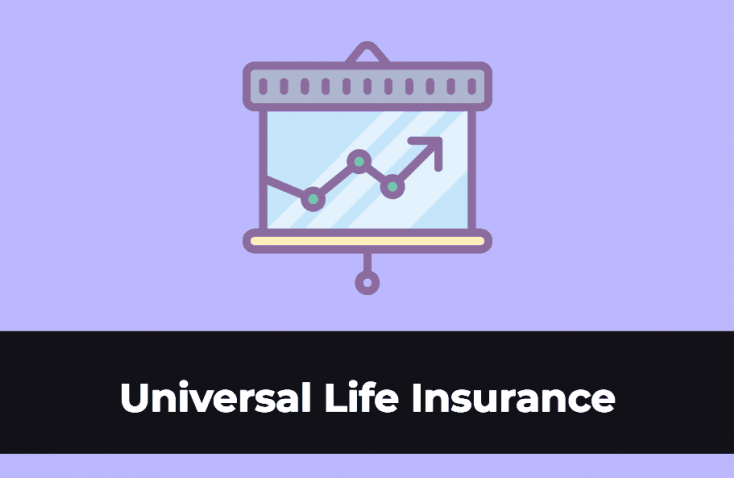to get insurance quotes in your area
Factors That Affect Car Insurance Rates

What factors are most important for car insurance rates? There are quite a few. Auto insurance providers use a complex series of formulas to determine what a person will pay for their auto insurance plan. Being aware of these things can help you determine when to get free quotes from other insurance companies to see if you can save more money overall. Professionals recommend getting quotes from multiple companies every few years, as the formulas the car insurance carriers use change often. Also, a person’s life situation may change. Whenever their status changes, they should research car insurance rates. Different companies weigh different variables in unique ways, so if you get married, graduate college, improve your credit score, or have any other large life changes that occur, research your auto insurance rates to save. Here are some of the factors that affect your car insurance rates.
Age
The age of the driver significantly impacts car insurance rates. Statistics show that both younger and senior drivers tend to get into more car accidents. The impact of age on auto insurance rates starts high for new drivers before lowering around age 20 and dropping even further around age 25. The influence of age on rates tends to be lowest around age 50 before increasing again at age 70+. States where age does not impact a customer’s rates, include California, Hawaii, and Massachusetts. While Rhode Island does increase rates for young drivers, legal provisions prevent auto insurance providers from denying coverage based on age alone to drivers age 65 and up.
Driving History
Driving history also impacts car insurance rates. Auto insurance providers view a driver’s past record as a strong predictor for a driver’s future behavior. People who receive tickets and get into accidents are considered likely to do so in the future and therefore pose a higher risk to insurance providers. Conversely, individuals with no tickets on their record are offered a lower rate and may even be eligible for “good driver/good customer” discounts if they can maintain their good record. While rates may increase for those with poor driving records, traffic violations and accidents can be removed from someone’s record, provided they can avoid further tickets and accidents in subsequent years. The amount of time needed to remove violations from a record varies from 3-10 years, depending on the severity of the violation.
Credit Score
While controversial, many car insurance providers take the credit score of a driver into consideration when determining rates. Research has shown that those with lower credit scores tend to get into more accidents and make more expensive claims compared to drivers with higher credit scores. A study by the Federal Trade Commission also indicated that credit scores are an accurate predictor of driver risk. Consequently, drivers with low credit scores may have to pay higher premiums to automobile insurance companies and may need to pay more of the policy upfront. Some states do not allow companies to use a person’s credit score when determining their premiums.
Years Of Driving Experience
As with many activities, a driver’s skill level tends to increase the more experience they have driving. New drivers, whether 16 or 50, are more at risk for getting tickets and being involved in accidents. Therefore, car insurance providers tend to raise rates for new drivers and gradually lower them as drivers gain experience.
Location
Auto insurance providers may factor the driver’s location into insurance rates. Certain zip codes may be more likely to experience vehicle thefts or break-ins, so insurance providers may increase rates to compensate for the increased likelihood of a driver making a claim. Further, car insurance rates can differ greatly from state to state due to variations in state-wide regulations. For example, 2020 data shows that Michigan drivers pay a premium averaging around $3,000, while Ohio drivers pay closer to $1,000 on average.
Gender
Many states allow automobile insurance providers to alter rates based on gender, particularly when it comes to young drivers. Data shows that young men are more likely to both travel and engage in risky driving behavior compared to young women. While rates are comparable for all genders from ages 30-60, rates tend to increase again for male drivers aged 60+ due to higher risks for car accidents compared to females aged 60+. States that do not allow gender to affect insurance rates include Hawaii, Massachusetts, Michigan, Montana, North Carolina, and Pennsylvania.
Insurance History
Drivers with continuous insurance history tend to receive better rates compared to those with gaps in their insurance history. While a driver does not need to necessarily use the same provider throughout their insurance history, sticking with the same car insurance company for many years in a row can sometimes make them eligible for discounted premiums through “loyalty” benefits.
Annual Mileage
The annual mileage on a vehicle, as well as where and when someone drives their vehicle, can impact insurance rates. The more an individual drives, the more likely they are to get into an accident or get ticketed for a traffic violation. Not only that, but drivers who commute into and out of metropolitan areas are viewed as more at risk for accidents since more densely populated areas are more likely to be subject to theft, accidents, and break-ins. California drivers are most likely to be significantly impacted by this factor.
Marital Status
Those stay-at-home date nights for married couples can have wider financial implications than saving money on dinner. Because data has shown that married couples are less likely to go out and tend to be safer drivers, car insurance providers tend to discount the rates of married couples on a shared policy. States that do not permit insurance companies to alter rates based on marital status include Hawaii, Massachusetts, Michigan, and Montana.
Claims History
Auto insurance companies not only take driving records into consideration when determining rates, but also claim report history. Companies analyze the number of claims made, the payout for those claims, and who, if anyone, is at fault. Depending on the insurance provider, drivers are likely to see an increase in their rates if they have an extensive history of past claims or file a new claim. Drivers filing a new at-fault claim can see a subsequent jump in their 6-month premium ranging from $200 to $600.
Coverage Level
Auto insurance providers offer a variety of policies that include different levels of coverage. Individuals who choose plans with minimal coverage pay less for premiums but risk not having sufficient coverage in the event of an accident. Likewise, people who choose plans with extensive coverage are going to pay higher premiums.
Vehicle
The age, make, and model of a vehicle also impacts rates. For example, automobile insurance providers may charge a higher premium for a shiny new sports car to account for both increased likelihood of risky driving behavior and for increased risk of vehicle theft. Car insurance providers also consider how costly it could be to repair a vehicle in the event of a collision. While some companies provide discounts for additional safety features common to newer vehicles, like a backup camera, companies are currently more likely to increase rates on vehicles with these features due to the potential cost of repair.
Vehicle Ownership Status
Car insurance premiums can vary depending on whether the vehicle(s) are leased, owned, or financed. This is mostly due to additional types of insurance that the financing contract may require.
Discount Options
There are several ways a driver can get a discount on their auto insurance. While there are certain factors a driver can’t alter, such as age and gender, drivers can manage other risk factors that impact their car insurance rate. By practicing safe driving habits and not committing traffic violations, policyholder’s can receive discounts on their auto rates. Bundling auto policies with home insurance, motorcycle insurance, or life insurance can also reduce overall costs. Finally, make sure to compare rates from various auto insurance providers to find the policy that best meets lifestyle needs and financial constraints.
Insurance Company
Not only can the various personal factors about a driver drastically impact their car insurance rate, but who a person chooses for an insurance provider can greatly alter their auto rates. The average 6-month premium across companies can range from $500 to over $1,000. Individuals should compare insurance rates from various companies to make sure they’re receiving the best rates available.
Comparing Rates From Multiple Companies
This is the top spot to get the best prices for car insurance available. You can research multiple companies and get free quotes from them quickly and easily with the free quote tools on this website. Here, you can also determine which discounts apply to you, further saving money. Professionals recommend doing research every year or two to save the most money on auto insurance. Changing automobile insurance providers is common for people looking to keep more money in their wallet.







Add new comment